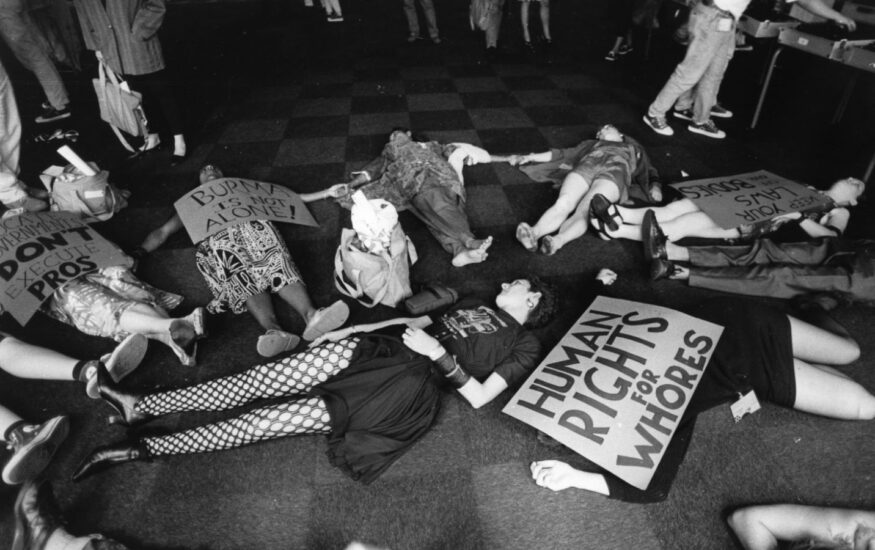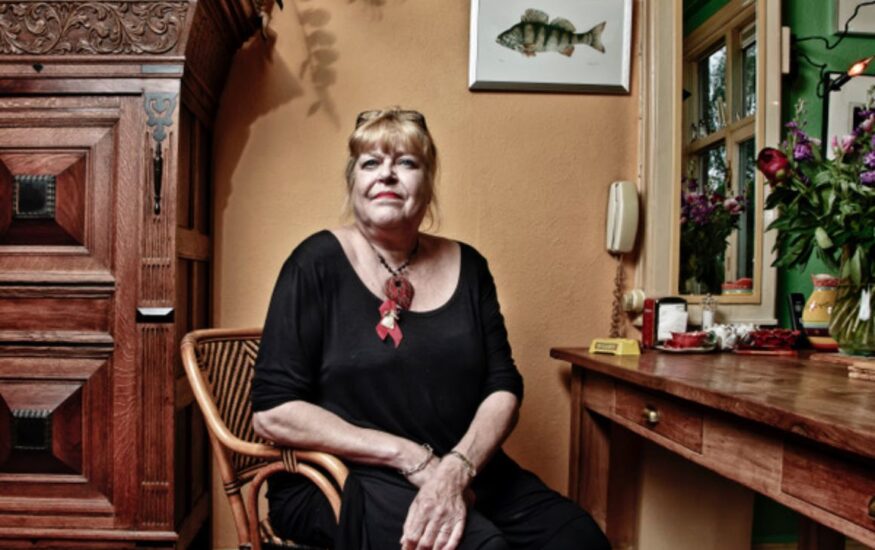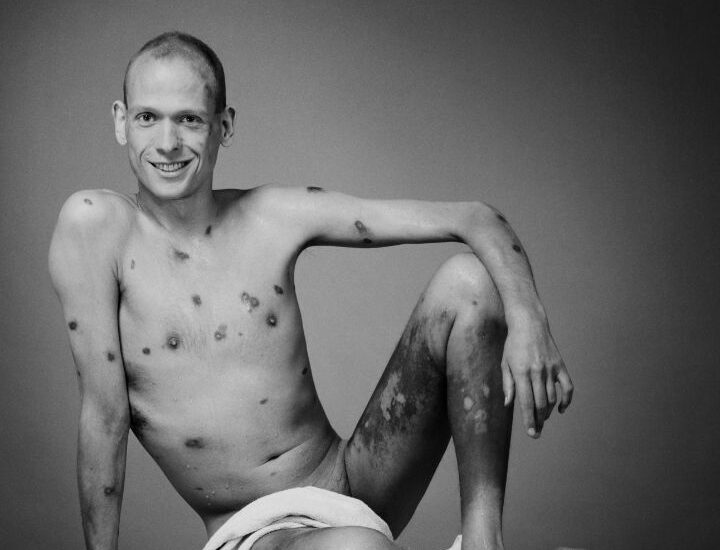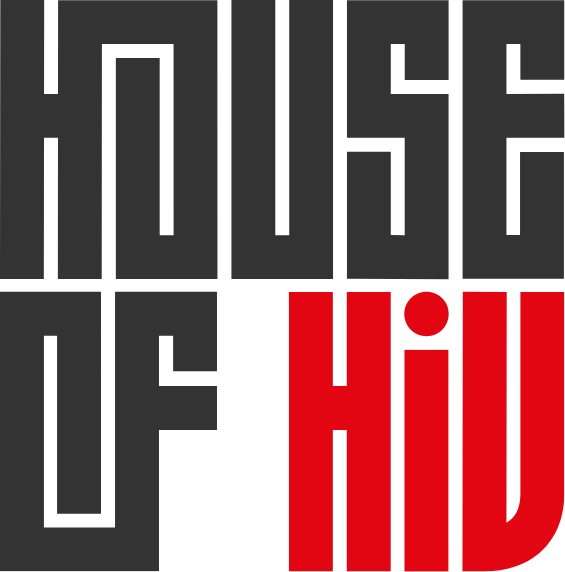Since the start of the epidemic in the Netherlands, the affected communities have played a major role in tackling HIV and Aids. In ways to live with HIV, or how to prevent it. And how we can take care of each other and fight for the right cause. Unlike many other countries, in The Netherlands the various communities were involved – some more than others – in the planning, organization and implementation of various projects and activities. This has resulted in an impressive number of community initiatives that have been substantial, innovative and crucial (and in part still are!) Initiatives that have remained largely invisible to the general public.
The history of how the Dutch HIV community took matters into its own hands is on many fronts a success story of solidarity, resilience and activism, of which we as communities can be immensely proud. But in showing this legacy, the more difficult and painful parts of the past are certainly not shunned. Not everyone was involved, not everyone was reached.
As of 2020, we have been busy doing research and conducting interviews about this history. The challenge was to create an inclusive exhibition. To make the invisible visible. We are not complete and there are blind spots, but we wanted to give as many stories as possible a place in the House of HIV.
With this exhibition, we pulled the curtain away from this rich history of four decades of surviving and living in an epidemic and we also looked ahead to the end of Aids.
House of HIV is a house under construction. If it is up to us, this will be a long-term project, in which we will continue to work on archiving, documenting and exhibiting the history of the Dutch HIV community.
If you have a personal story to share about HIV and Aids – about loved ones we’ve lost – please mail info@hellogorgeous.nl.


Fighting

When Aids emerged, groups began to appear that stood up for the rights of people living with HIV. For example, there were the Dutch divisions of the American ACT UP New York: Act Up! Amsterdam and Act Up! Utrecht, which ensured that everyone who had HIV was seen, not only gay men, but also women, children, drug users and (ex-)prisoners. The Association for People with Aids (BMA) and the Association for HIV-positives (BSP) together formed the HIV Vereniging in 1990. All kinds of sub-initiatives arose from the association, such as groups for women, families, young people, gay men and long-term survivors. In the queer community, drag performers have also played an important role in HIV activism throughout the years, from Hellun Zelluf, Dolly Bellefleur to Nicky Nicole and Jennifer Hopelezz. There were several initiatives that combined celebrations with activism and raised money for the Aidsfonds or other HIV charities. Some of the benefits were legendary like the Love Balls at the RoXy in the 1990s. These later turned into Lovedance in Paradiso.

Caring

Several communities took care for people living with HIV and Aids, mostly born out of necessity as the biological families took their hands off loved ones with Aids. The buddy system came from America: informal care by people from your own community , who did this out of charity and compassion. Also within professional care are countless stories and memories from nurses and doctors about people they cared for with love and dignity. The buddy projects of yesteryear are still there today. For example, there is the buddy project of Positive Sisters & Brothers of ShivA, where people with HIV with African and Caribbean backgrounds inform and support each other. Various communities were also given the opportunity to design their own prevention projects for each other. To take care of each other by informing and protecting each other. These projects took several forms within the various communities: from safer sex posters and -campaigns and PrEP workshops to the needle exchange projects for people who used drugs.

Remembering

The first fifteen years of the HIV epidemic were mainly dominated by loss. Often young people, in the prime of their lives, who suddenly had to deal with death. The loss of loved ones – often multiple loss – caused a complicated grief process and survivors quilt among those left behind. There were community initiatives for collaborative grieving, such as the annual Aids Memorial Day and name flags, where people were remembered with a quilt made by friends and family. Ultimately, this resulted in the HIV/Aids monument in 2016. Today, there are still twenty Aids deaths in our country every year, often people who entered care too late.

Healing

Forty years of living with HIV has also left holes in the resilience of many communities. Grief over the loss of loved ones, experiences of stigma and exhaustion from the constant challenges and tireless work made people look for and find ways to pick themselves up and recharge. The Dutch HIV community shows a lot of resilience and we inspire and empower each other on community days like The Power of Love and Share the Power. AIDS should end by 2030, according to UNAIDS. New scientific insights such as the impact of HIV treatment on the prevention of further spread (Undetectable Equals Untransmittable) and the prevention pill PrEP have caused a decrease in new HIV infections. But what will happen to the group of people with HIV, which is getting older and eventually smaller in size? Will this group be increasingly forgotten?
Colofon
House of Hiv is a collaboration between Mainline, Prostitution Information Center, Trans United, Black Queer Archives, IHLIA LGBTI Heritage, HIV Vereniging and hello gorgeous.
Many thanks to: Karen Kraan, Marc Noyon, Lorin Kamperman, Durk Doornbos, Christina Della Giustina, Marjolein Annegarn, Jennifer Aldrich, Jasper Wiedeman, Dawn Betteridge, Sherry Jae Ebere, Tomas Derckx, Michel Otten, Saskia Hogervorst, Aldree Martinez, Ruud Douma, Tetterode and the City of Amsterdam.
Special thanks to everybody who shared their story with us for this exhibition.
Projectmanagement: Leo Schenk
Production manager: Natasha Vieleers
Steering group: Dinah de Riquet-Bons, Machteld Busz, Iris de Munnik, Wigbertson Julian Isenia, Pieter Brokx,
Martien Sleutjes, Stefan Silvestri, Leo Schenk
Design and art direction: gebr.silvestri
Construction: Fiction Factory
Print: Watjeziet
Curators: Bart Krieger and Hugo Schalwijk
Research and interviews: Mia Vrijens
Photo editing and -documentation: Henri Blommers
Internal research: Inês Brito, Martien Sleutjes, Guido van Diepen, Phoebe Marsh, Sander de Groot, Sien van Oeveren, Wigbertson Julian Isenia and Leo Schenk
Texts: Mia Vrijens, Hugo Schalwijk,
Bart Krieger, Wigbertson Julian Isenia and Leo Schenk
Final editing: Rob Nijman
Translation: Tom Johnston
Video: Transketeers, Wessel Haaxman
Website: TwelveTrains

